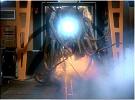Nikademus
Posts: 25684
Joined: 5/27/2000
From: Alien spacecraft
Status: offline

|
[QUOTE]Originally posted by Mike_B20
[B]Were the Japanese equipped for amphibious landings in the face of the enemy?
I can't recall too many examples where they did it successfully.
They were repulsed at Milne Bay...at Wake they resorted to running APD's aground to get some of the troops and supplies ashore.
Even at Wake they were given a bloody nose.
Can anyone recall where the Japs did land successfully in the face of strong opposition, apart from Wake?
What were their plans at Midway for getting heavy eqipment ashore? More running ships aground? [/B][/QUOTE]
The Japanese were among the most proficient in terms of amphibious operations with ironically the army having invested the most time/effort in training exercises and actual operations. While the navy participated and cooporated, it's own SNLF were more variable in role and function....originally formed as naval "infantry" in the absence of army troops but with certain units later training for amphib ops as well.
Amphibious assault was the exclusive domain of the US Marine corp in large or medium scale content, although this should not be confused with efficiency in late war terms. While indoctrinated, there were still many lessons to be learned in actual practice (revealed for example by WATCHTOWER) and more advanced tools to be developed. Tarawa was the first real test and things very nearly went wrong even at that late stage of the game.
I've noticed in discussions in the past that these two definitions get blurred very readily and its easy to do. Amphib operations are usually conducted against lightly defended or undefended locals. This does not reduce their importance because even conducting an unopposed landing is a very complex and difficult task to acheive successfully in a short period of time. It requires good planning, disciplined and well trained soldiers/sailors, and great organization.
Amphib assaults are even more dangerous of course....the storming of a defended stronghold/beach which requires strong supporting elements to have any chance of succeeding. (Landing craft.....supporting warships....airpower...etc etc)
quote:
Mike,
Never mind supply issues. The above AAR is all you need know to understand whats really wrong with this picture. The Japanese somehow landed over 90,000 troops and 900 guns in a single day. Presumably without disruption judgeing by the total failure of the allied shock attack.
I just keep repeating to myself that its only alpha, its only alpha, its only alpha, but I sure hope things like this are not going to be considered ok.
Understand your concern here TIMJOT, but in fairness, your example works the other way too. You are highlighting the potential issues on the ability of the attacker to land so many troops so quickly but are passing over the equally unlikely possibility of a mass attack by the defender in such a short period of time. This is not Tarawa, or Okinawa after all....this is a large island in peacetime condition, and one that just suffered a devastating attack which has communicaitons and command/control disrupted. The only two actual combat formations are not at the beachhead, ready to try to throw the invaders back into the sea on a moment's notice. How then does one judge what is fair then? If the Japanese should be considered in no condition to attack....how much of the defenders should be allowed to counterattack? I have problems envisioning gaggles of US servicemen driving up to the beachheads in whatever military or civilian vehicles that can be comendered and staging a "bums rush" of their own :D
As Mogami mentioned.....is there room for improvement? sure. It is being worked on as we discuss this. However i think we should also keep in mind the limitations we are forced to deal with in a game of this scale. This is not Korsen Pocket after all, the engine has to be able to deal....somewhat abstractly, with a wide variety of possible combat situations. A similar situation to the issue of "Port attacks" and the unique circumstances that surrounded the PH attack itself.
As such there are going to be the odd situation or two. Given the full implications of this early test, i seriously doubt many are going to employ this extreme strategy given how much of the IJN/IJA it would require for questionable gains. The capture of PH remains an interesting what if....but its usually discussed in the context of an overall Japanese offensive. As an opertation conducted to the exclusion of all else....including aquisition of the resources that were Japan's motivation for war in the first place....its not very practical. I think WitP's infrastructure (logistics) are sound enough even at this stage to show that. In other words, its not a PacWar situation.
|
 Printable Version
Printable Version











 New Messages
New Messages No New Messages
No New Messages Hot Topic w/ New Messages
Hot Topic w/ New Messages Hot Topic w/o New Messages
Hot Topic w/o New Messages Locked w/ New Messages
Locked w/ New Messages Locked w/o New Messages
Locked w/o New Messages Post New Thread
Post New Thread